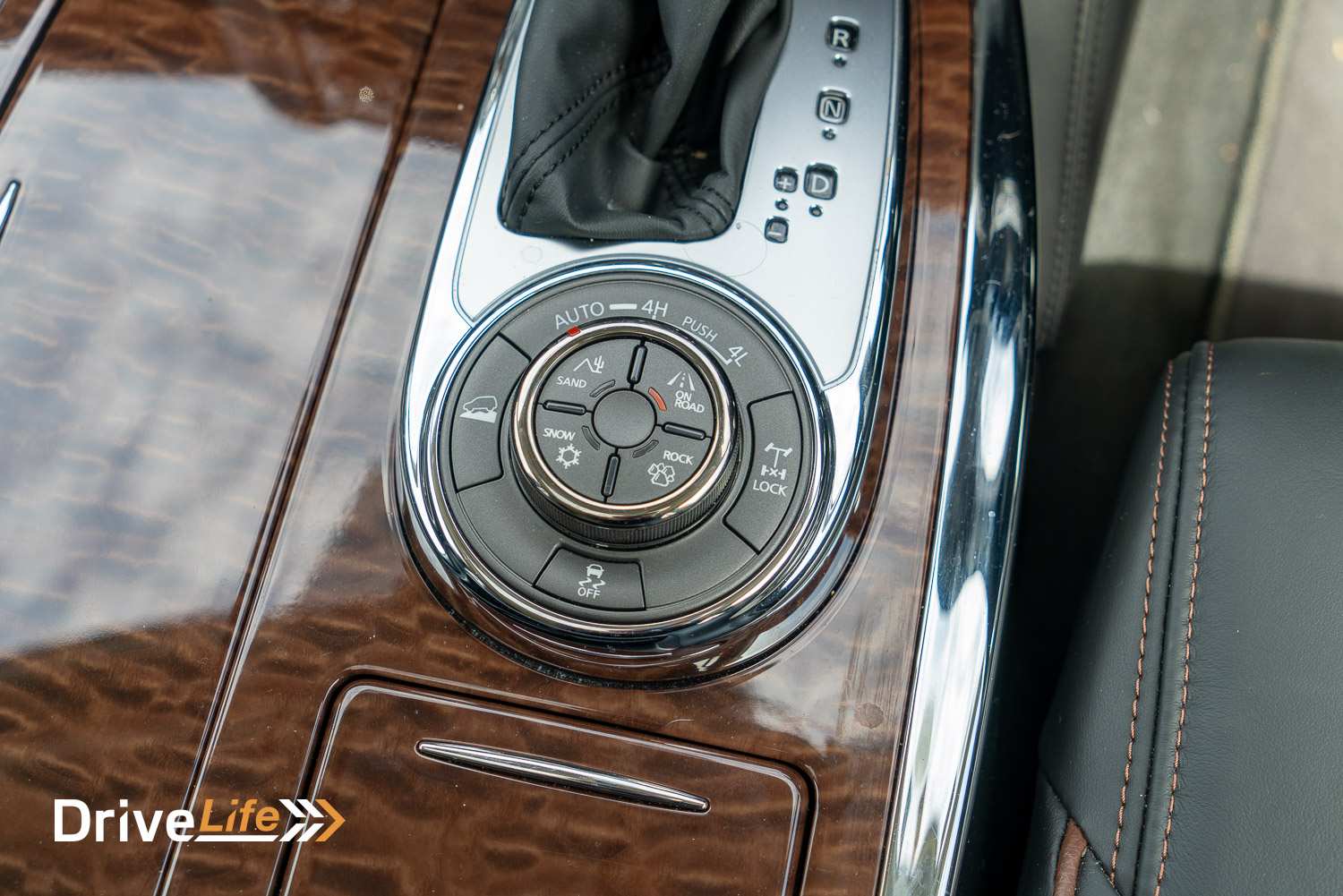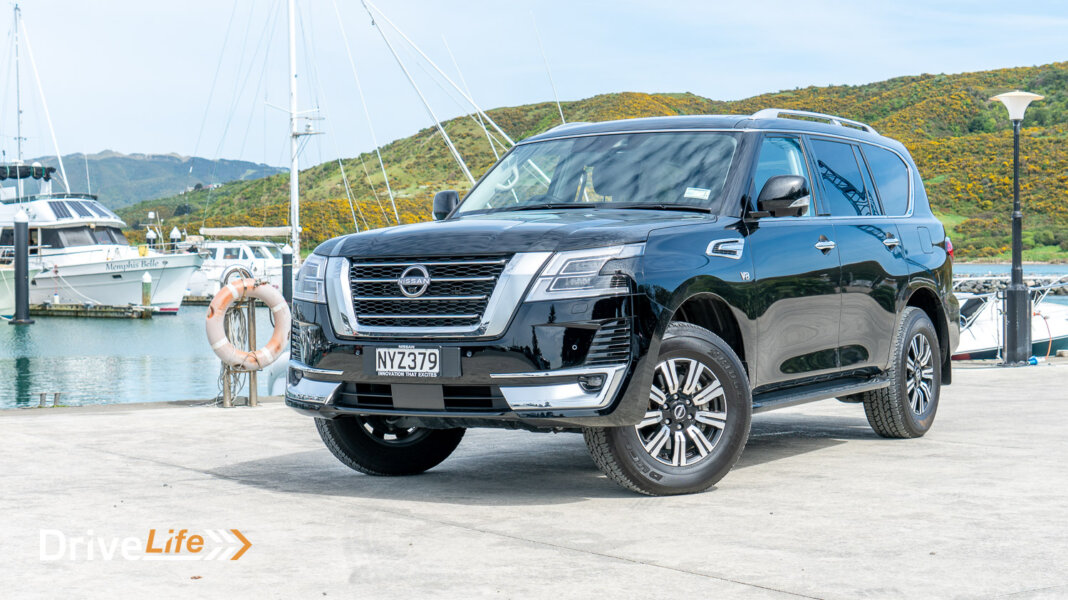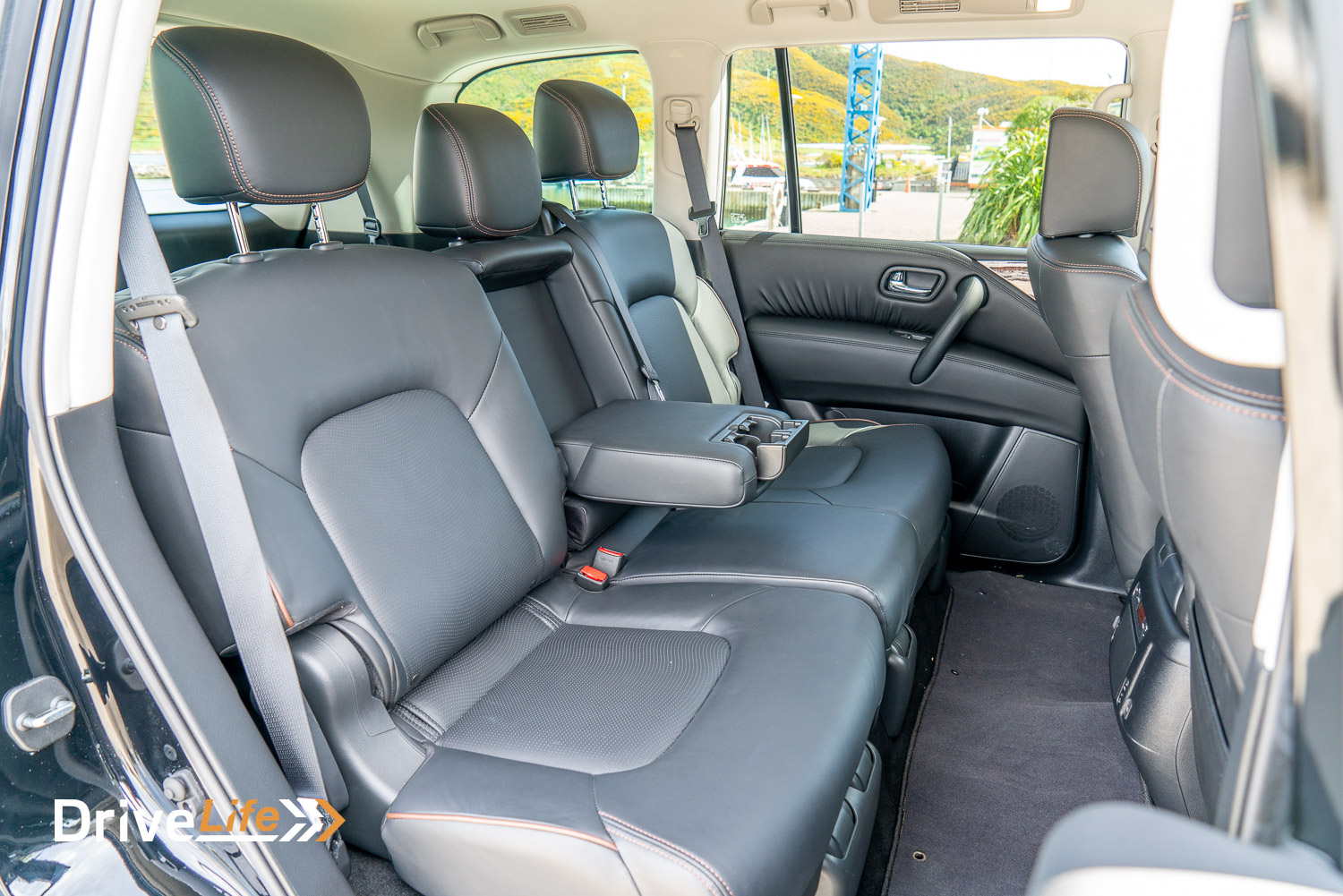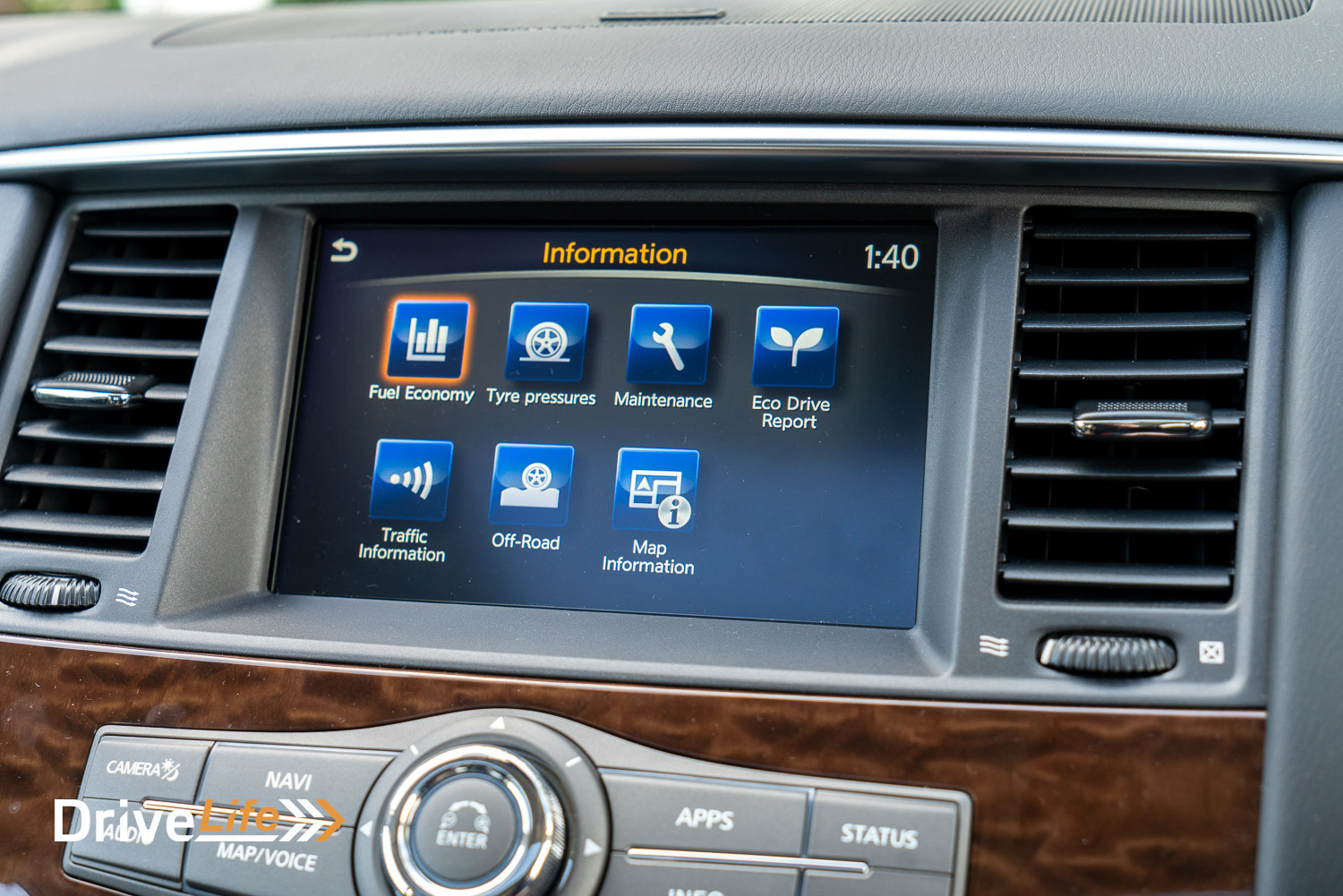Not many 4×4’s can hold a candle to the mighty Toyota Land Cruiser. But, if there was ever a 4×4 to contend for the throne, it would be the Nissan Patrol.
The Patrol has been Nissan’s answer to the Land Cruiser since the early 1950’s. The first Patrol, known as the 4W60, arrived in 1951 and was produced to contend with Toyota for a government contract, requiring a go-anywhere utilitarian vehicle, which could be used by critical services and the members of the public, despite war-ravaged roading infrastructure. Unfortunately for Nissan, Toyota won the tender, but that didn’t stop Nissan from persevering with the Patrol.
In 1959, Nissan developed the 2nd gen Patrol, and began exporting outside of Japan for the first time. The first models arrived in Australia in 1960, and it didn’t take long for the Patrol to gain a reputation for being an outback conqueror. In 1962, the Nissan Patrol became the first car to cross the Simpson Desert. More impressively, it was done in private hands, by a bloke with his two kids in the back.
Since then, the Nissan Patrol has been through six generations. Today, we have the latest Y62 Nissan Patrol, which first debuted in 2011. In 2022, the Y62 has just had its second facelift, but it’s still largely the same 4×4 that came out 11 years ago.
Does the aging Nissan Patrol still have the talent to take on Toyota’s new Land Cruiser 300? We had the keys for a week to find out.

What We Like and Dislike About The 2022 Nissan Patrol TI-L
| What we like | What we don’t like |
| V8 performance and refinement It’s fast! Wonderful noise Plush ride Good handling for a large SUV Driving position Off-road capability $17,000 cheaper than a base Land Cruiser | Dated interior Sparse allocation of tech Bare-bones infotainment Poorly utilised storage spaces Fuel economy – drinks like a fish Car is a decade old now |

What’s In The 2022 Nissan Patrol Range?
There’s two models of Nissan Patrol available for New Zealand buyers. The entry level model is the Patrol TI, and the top-spec is the Patrol TI-L.
| Model | Price** |
| Nissan Patrol TI | $106,990 |
| Nissan Patrol TI-L | $110,990 |
The Nissan Patrol range is powered by a 5.6-litre V8 engine, producing 298kW of power and 560Nm of torque.
Being the day and age it is, a big burly V8 doesn’t get off lightly from the Clean Car Regime. As at the time of writing, the Nissan Patrol range incurs the maximum clean-car fee of $5,175. Ouch.
2022 Nissan Patrol TI-L Equipment Highlights
- 18’’ Alloys
- 10-way power adjustable drivers seat
- 12V power outlets (front, centre console, second row and rear luggage area)
- 6-speaker audio system
- 8’’ infotainment with SatNav and Bluetooth
- 8-way power adjustable passenger seat
- Auto headlights
- Cruise control
- Electronic rear differential lock
- Front and rear parking sensors
- Hydraulic Body Motion Control suspension (HBMC)
- Intelligent 4WD shift switch (Auto, 4H & 4L) with mode select (On Road, Sand, Snow, Rock)
- LED Fog lights
- Off Road Monitor
- Remote keyless entry with Push button start
- Second row air conditioning controls
- Tri-zone climate control air-conditioning
Upgrading to the TI-L gets you:
- 13-speaker BOSE audio system
- 2x 8″ rear entertainment screens
- Cool box
- Digital Rear View Mirror (I-RVM)
- Driver’s memory seats, with side mirror and steering position
- Heated and cooled front seats
- Power operated tailgate
- Premium bumper
- Puddle illumination light
- Roof rails
- Sunroof with Privacy Glass
You also lose a seat in TI-L spec. The Patrol TI-L has 7 seats, whereas the Patrol TI has 8 seats.
There’s plenty of safety gear to go with that too, including:
- 2 x ISOFIX outer seats
- Adaptive Cruise Control
- Blind Spot Intervention
- Blind Spot Warning (BSW)
- Forward Collision Warning (IFCW)
- Front adjustable active headrests
- Hill Descent Control (HDC) with on/off switch and Hill Start Assist (HSA)
- Intelligent Around-View® Monitor (AVM) with Moving Object Detection
- Intelligent Emergency Brake (IEB)
- Intelligent Lane Intervention
- Lane Departure Warning (LDW)
- Nissan Anti-Theft System (NATS) vehicle immobiliser
- Rear Cross Traffic Alert (RCTA)
- Tyre Pressure Monitoring System (TPMS)
- Vehicle Dynamic Control (VDC) including Traction Control System (TCS)
There are five standard colours for Nissan Patrol range, these are:
- Brilliant Silver
- Black Obsidian
- Moonstone White
- Gun Metallic
- Hermosa Blue
For more information on the Nissan Patrol, check out the Nissan New Zealand website.


How Does The 2022 Nissan Patrol TI-L Compare To Its Competition?
There might be plenty of 7-seaters on the market, but not nearly as many that can go off-road. Here’s some of your options.
| Make/ Model | Engine | Power/Torque kW/Nm | Seats | Fuel L/100km | Towing Capacity | Boot Space, litres | Price (excl CCP) |
| Land Rover Discovery R Dynamic HSE | 3.0L turbo-diesel V6 | 221/650 | 7 | 8.8 | 750/3,500 | 922 | $133,900 |
| Volkswagen Touareg R-Line | 3.0L turbo-diesel V6 | 210/600 | 5 | 8.2 | 750/3,500 | 810 | $129,990 |
| Toyota Land Cruiser 300 VX | 3.3L twin-turbo diesel V6 | 227/700 | 7 | 10.2 | 750/3,500 | 1,004 | $128,390 |
| Nissan Patrol TI-L | 5.6-litre V8 petrol | 298/560 | 7 | 14.4 | 750/3,500 | 1,413 | $110,990 |
| Jeep Grand Cherokee-L | 3.6-litre V6 petrol | 210/344 | 7 | 10.6 | 750/2,800 | 1,328 | $104,990 |

First Impressions Of The 2022 Nissan Patrol TI-L
It’s big, it’s black, and it’s shaped like a brick. There’s also lashings of chrome everywhere. If this was an early 2000’s rap video, the Nissan Patrol would fit right in.
On a more serious note, this sixth generation breaks away from boxy designs of earlier Patrols. The edges are rounded off, the front grille and bumpers hang lower, and there’s sharp LED lights to modernise the exterior.
Where older Patrols conveyed a rugged utilitarianism, the modern patrol looks more suburb friendly. It’s not a bad thing, and it potentially opens the market up to families who would like their urban assault vehicle to look slightly less intimidating.
Of course, all of that can be rectified with a set of mud tyres, a snorkel and some black exterior trims. Then, you’re back to a Patrol that’ll beat you up for your lunch money.

What’s The Interior Like In The 2022 Nissan Patrol TI-L?
The registration ticket on the dashboard might say 2022, but stepping inside the Patrol will take you back a decade. Inside, there’s acres of (fake) wood veneer and buttons galore! Honestly, this cabin reminds me of a late 2000’s Chevy Tahoe.

Putting it bluntly, the Patrol isn’t going to light a tech enthusiast’s hair on fire. In fact, it’s fairly dated in here, compared with the tech we’re seeing in cars these days. But on the flip-side, the Patrol does the traditional aspects just right.
First off, there’s the space. If the outside hadn’t already given it away, the Patrol is massive. Nobody will be complaining for space, unless you stuff basketball players into the 3rd row. The build quality is also good, and should survive some mistreatment for those that want to get their wheels dirty or their kids in the back. The steering wheel controls were the only let down – they’re a bit on the flimsy side.

Much like an American, everything inside is upsized. The front seats are akin to flopping onto a sofa, if your sofa is heated and cooled, that is. The buttons are chunky, designed for gloved hands and fat fingers. The centre console is wide, but probably so it’s proportionate with everything else.
The driving position grants you with a commanding view ahead, making small crossovers seem like ants. It’s satisfying to sit here, even when the car is off.
As satisfying as it is to simply sit in, that initial satisfaction may turn once you realise you’ve paid $100,000 for such a sparce allocation of tech.
To give you an idea, the 8’’ infotainment screen atop the dashboard still doesn’t offer Apple CarPlay or Android Audio. Something that many cars a quarter the price already have. However, you do still have Bluetooth and a CD player!

The infotainment itself is fairly no-frills. The screen resolution isn’t the sharpest, and nor is the resolution of the connected exterior cameras. That said, it actually responds fairly quickly to the touch, presumably because it’s not full of features and other bloatware. It also has a simple interface, meaning there’s unlikely to be any complaints from the older demographics.
The infotainment system is connected up to a 13-speaker BOSE audio system, which is an upgrade for the Patrol TI-L. The base Patrol TI has an unnamed 6-speaker audio system. The overall sound quality of the Bose is reasonably good, but other cars for similar money can do it better.
While many in the industry are shifting to digital dash clusters, the Patrol’s cluster is analogue. Personally, I like analogue clusters. They’re suitable for a hardy vehicle like a Patrol, and they’re probably less likely to fail in the long-run. The gripe I have is with the chintzy multi-info display on the cluster. It works fine, I suppose, even though it looks like it belongs in an old Pulsar.

All this said, the Patrol does have one tech trick up its sleeve. Reach to flip the rear-view mirror down, and instead of angling downwards, the mirror switches over to a camera view. Nissan calls this an Intelligent Rear View Mirror (I-RVM), providing you with an unimpeded view out the back, should the car be stacked full of passengers. It’s a nifty little feature, and funnily enough, I’ve only seen this before on a Cadillac. Told ya the Patrol was American at heart!
There’s also a few extra amenities as well, like a centre cool-box and screens for second-row passengers to watch DVDs. The 3rd row passengers aren’t as lucky. Their only feature is a cupholder.
While space is abundant inside the Patrol, storage – surprisingly – isn’t a strength of the Patrol. The large cubby on the centre console is taken up with two shallow cup holders, and the remainder is occupied by a 12V socket and an awkward L-shaped trim piece. You can’t remove the cup holders either.
There’s a smaller cubby beneath the off-road terrain controls, but I only found it useful for stashing keys, and not much else.
Above all, I couldn’t find an easy spot for my wallet or smartphone that wasn’t the glovebox or the centre console. Even if you’re not fussed on this, the space is limited in other ways too. Say, if you have a notepad or a screwdriver.

The boot isn’t exactly perfect either, mainly because the seats never folded perfectly flat. It’s a small fish, I suppose.
Of all the fish to fry, the tech situation really could be better for $100,000. You can argue it’s spent on, arguably, more important things which we’ll cover in the driving section. But, overseas, in more important markets, you can get an Infiniti QX56, which is more modern and technology laden. It would have been nice to see some of that trickle down into the Patrol, but I suspect those going for this formula aren’t likely to care.

What’s The 2022 Nissan Patrol TI-L Like To Drive?
You know how I mentioned the Patrol keeps it traditional? It’s the same story under the bonnet. Powering the Nissan Patrol is a whopping-large 5.6L V8 engine, called the VK56VD. There are no turbochargers on this Patrol. It’s all naturally-aspirated, and its preferred drink is petrol. It produces a mighty 298kW of power and 560Nm of torque, paired with a 7-speed automatic gearbox.
Can we take a moment to appreciate those numbers? It wasn’t long ago we had HSV’s putting down those figures. Anyway, the Patrol’s 298kW should be considered mighty by anybody’s standard. In context, it’s a whole 70kW of power more than the new Land Cruiser 300. However, the Landy beats the Patrol on torque, by around 140Nm.

Even carrying its hefty 2,800kg-odd frame, the Patrol can seriously get-up and boogie. Honestly, mash your foot to the floor and that speedo needle will surprise you by how quickly it climbs. Sure, it mightn’t have the same off-the-line thrust of the Cruiser, but once you’re rolling, the Patrol is quicker.
Being all engine, the power feels so effortless. There’s also big surplus in the mid-range, meaning you’ll sail past the shocked faces of crossover drivers in the passing lane, as they contemplate how something this large is moving so briskly.
Accompanying the pace is a wonderfully deep and grizzly V8 exhaust note. It sounds as if you’ve just awoken a giant from his slumber. Between the power and the noise, the Patrol is a satisfying vehicle to pilot.

A full-size 4×4 carrying nearly three tonnes on its frame isn’t exactly going to be the final word in cornering agility. That said, the Patrol does surprisingly well in the twistier sections. The body control is impressive, remaining relatively flat and composed through a brisk corner. Can you imagine the stress the springs are under when cornering this beast?
But it’s not simply the spring set-up. Part of the proficiency is down to the fact that the Nissan Patrol uses independent front and rear suspension compared with say, the Land Cruiser 300, that uses independent front and rigid axle at the rear. Independent all-around suspension rewards the Patrol with great on-road composure, but sacrifices the off-road advantages that come with a solid axle.
Furthermore, Nissan has developed for the Patrol a system called Hydraulic Body Motion Control (HBMC). Basically, it exists for the same reason as Toyota’s Electronic-Kinetic Dynamic Suspension System (e-KDSS) on the Land Cruiser. It enhances body control, by controlling the amount of body roll depending on the speed and the terrain. Essentially, it exists to improve on-road performance, and give the Patrol better wheel articulation off-road. Unlike Toyota’s e-KDSS, HBMC replaces the Patrol’s anti-roll bars with their action performed by the hydraulics. Toyota retains the swaybar with their system.

You’ll only encounter issues with HBMC if you’re looking to add a lift kit to your Patrol, where most dedicated off-roaders will delete the system.
Anyway, I’ll stop nerding out over the suspension. The important part to know is that Nissan has engineered the Patrol to handle well for a full-size SUV. Of course, enter a corner too quickly and the Patrol will remind you of its boat-like dimensions. But honestly, anyone who launches a three-tonne barge into a twisty road at full pelt probably has a few loose screws.
Instead, SUVs like the Patrol are designed to be pointed at the horizon, and to cover the distance between you and it. The Patrol will munch the miles, wafting you there like you’re riding on a pillow regardless of the load you’re carrying or the road underneath. This, the Patrol does beautifully.

How does it compare with the Land Cruiser 300? Handling wise, the Patrol has the edge on-the-road. In terms of ride quality, it’s tough to say without a head-to-head comparison. Both offer superb ride quality. Where the Land Cruiser will take the Patrol is off-road, partially for the reasons mentioned above. The GR Sport Land Cruiser we tested was pretty much unstoppable.
That said, the Patrol is very well equipped with off-roading gear for the money. As standard, you get Nissan’s Intelligent 4WD shift switch, giving you low-range, off-road driving modes and hill-descent control and the like. Both Patrols get a single locking rear-differential as standard, whereas Toyota requires you to go up to a GR Sport if you want lockers from the factory in New Zealand – admittedly, the GR Sport gives you two of them.
Unfortunately, we didn’t get the opportunity to run the Patrol off-road in the time we had it, but the reports I’ve heard confirm that the Patrol is still exceptionally capable.

Naturally, owning V8 in 2022 is going to wreak havoc on your wallet. That is, unless you were to own an oil refinery. During our test, we averaged an eye-watering fuel economy result of 17.9L per 100kms. Sure, I knew fuel economy wouldn’t be great going into this review. However, Nissan claims a consumption figure of 14.4L per 100kms. We managed to fit an entire Yaris Hybrid into the fuel consumption figure. Perhaps I was enjoying the V8 a bit too much…
Despite the Patrol’s tendency to chug fuel, the fuel tank is a massive 140 litres. Should you take the Patrol out into the wops over the weekend, you’ll still get over 700kms from it, even with our abysmal fuel economy result. Just be sure to look away from the petrol pump, when you return to fill-up the tank.
But look on the bright side! The tens of thousands you save buying a Patrol over a Land Cruiser can go towards the fuel bill. By the way, we achieved 11.3L/100kms from the Land Cruiser 300 from its V6 Twin Turbo Diesel, in case you were wondering.

Having first been released in 2011, the Patrol was never originally kitted out with all the safety related bells and whistles, which are demanded today. For the second facelift, Nissan has undergone an extensive retrofit.
All the core systems are there, as we’d mentioned in the range section. However, keeping with the Patrol’s light-on-tech personality, some optional systems are absent. Notably, lane-keep assistance (steering assistance), traffic sign recognition, a heads-up display and others.
Are they critical? Absolutely not. They’re just nice-to-haves, and another thing to temper when making the purchase decision.
Most importantly, the adaptive cruise control works well. The blind-spot monitoring is less effective, mainly because the warning light is mounted inside the cabin rather than the mirror itself. This is just a preference, and I know why they do it. It saves Nissan from needing to invest in homologating a new mirror.
But at the end of the day, there’s nothing quite as reassuring as basic physics. There’s not much else on the road bigger than the Patrol. Anyone, or anything that hits you, is likely coming off second-best.

2022 Nissan Patrol TI-L Specifications
| Vehicle Type | Full-size 7-seat SUV |
| Starting Price | $106,990 |
| Price as Tested | $110,990 |
| Engine | 5.6-litre naturally-aspirated eight-cylinder (VK56VD) |
| Power, Torque kW/Nm | 298@5,800rpm 560@4,000rpm |
| Transmission | 7-speed Automatic transmission |
| Spare Wheel | Full size |
| Kerb Weight, Kg | 2,861 |
| Length x Width x Height mm | 5176x1995x1940 |
| Cargo Capacity, Litres (3rd row down/2nd row down) | 1,413/2,632 |
| Fuel tank capacity, litres | 140 |
| Fuel Economy, L/100km | Advertised Spec – Combined – 14.4 Real-World Test – Combined – 17.9 Low Usage: 0-6 / Medium Usage 6-12 / High Usage 12+ |
| Towing Capacity Kg, unbraked/braked | 750/3,500 |
| Turning circle metres | 12.5 Small: 6-10m / Medium 10-12m / Large 12m+ |
| Warranty | 5 year / 150,000 km new vehicle warranty |
| Safety information | ANCAP Rating – No current rating – Last tested 2011 Rightcar.govt.nz – 5 Stars |






















